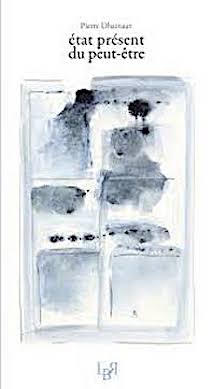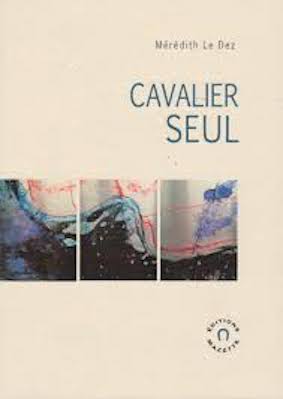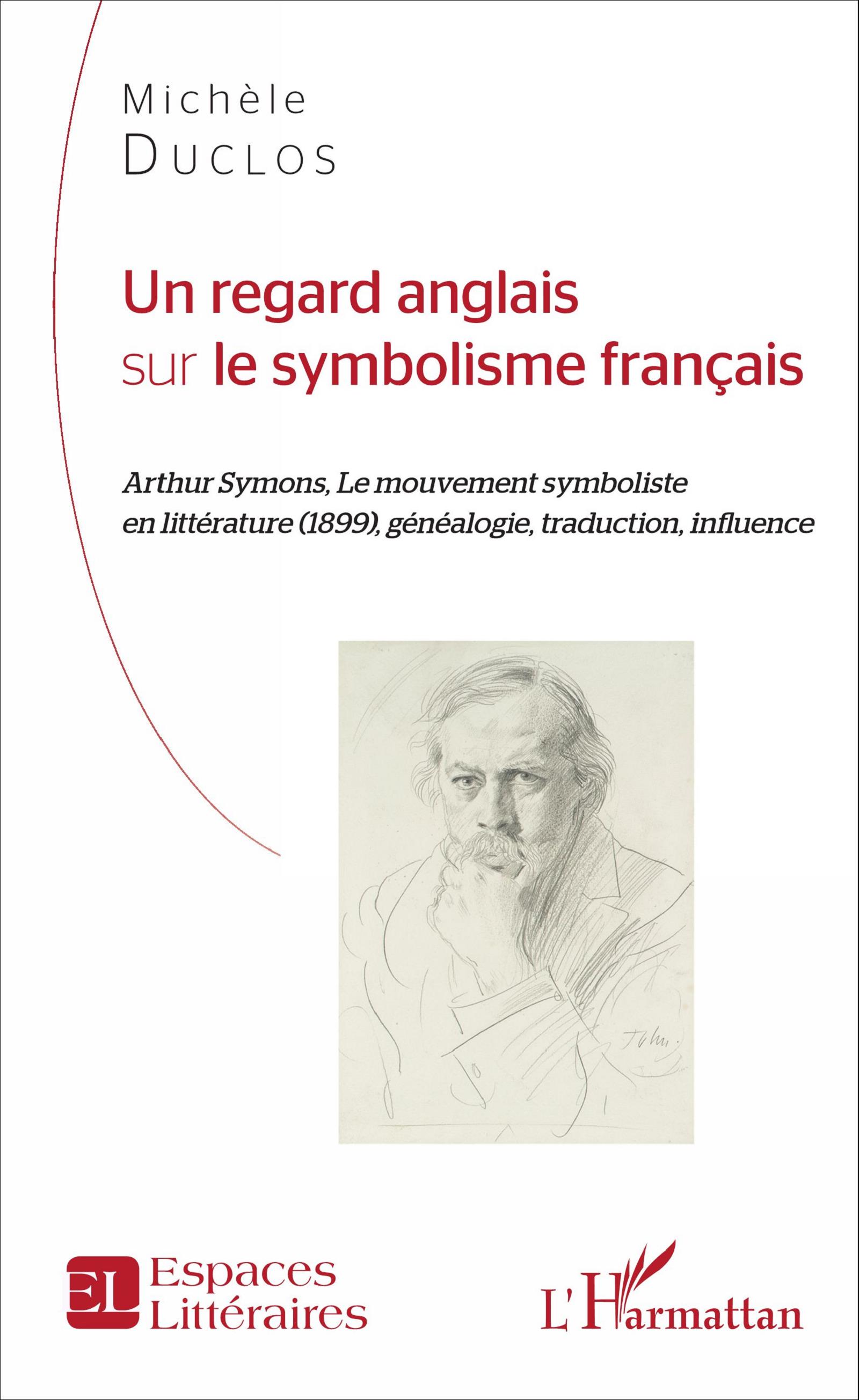How do you introduce a poet you love? “Dear new French friends, this is my old friend Gerard?” No—too artificial. Perhaps, “Meet my friend Gerard: he wrote exhilarating poems.” Or, “My friend Gerard wrote the most terrifying poem I know.” Possibly better? In any case, let me introduce Hopkins in all his exhilaration and terror. First, exhilaration :
Look at the stars! look, look up at the skies!
O look at all the fire-folk sitting in the air!
The bright bóroughs, the circle-citadels there
Down in dim woods the diamond delves! the elves’ eyes !
Or,
Summer énds now; now, bárbarous in béauty, the stóoks ríse
Around; up above, what wind-walks! What lovely behaviour
Of sílk-sack clóuds! has wilder, wilful-wávier
Méal-drift moulded ever and melted acróss skíes ?
I wálk, I líft up, Í lift úp heart, éyes,
Down all that glory in the heavens to glean our Savior.…
Or consider his terror, when Hopkins fears he’s losing his mind:
…My cries heave, herds-long; huddle in a main, a chief-
Woe, wórld-sorrow; on an áge-old ánvil wínce and síng—
Then lull, then leave off. Fury had shrieked ‘No ling-
Ering! Let me be fell: force I must be brief’.
O the mind, mind has mountains, cliffs of fall
Frightful, sheer, no-man-fathomed. Hold them cleap
May who ne’er hung there.…
Now you know him a bit, through his exhilaration and his terror. Now, may I introduce my poet-friend as he was and as he is: first, as he was in his life, then as he is, in his poems and his fame.
First, his life. Son of Manley and Kate Hopkins, Gerard was born in 1844 in a London suburb, the oldest of nine in a comfortable Victorian family, and he grew up in London’s cozy, leafy Hampstead. At Oxford, he was brilliant in Classics, became a Roman Catholic in 1866, and won a “first”—the highest degree—in 1867. For a year he taught school in Birmingham, then entered the Jesuit order in 1868. He learned Jesuit spirituality as a novice in London, studied philosophy in Lancashire, and theology in Wales. Ordained a priest in 1877 at the age of 33, he worked for seven years in Jesuit schools and parishes in England and Scotland, then went to Dublin in 1884 as Professor of Greek in the new University College. Five years later he contracted typhoid fever just as an epidemic was ending, and died in 1889 at the age of 44, seven weeks before his 45th birthday. He was buried in the Jesuit plot at Dublin’s Glasnevin Cemetery, and died almost unknown: his book Poems of Gerard Manley Hopkins was not published until 1918, 29 years after his death.
Such are the facts. But who was Gerard Hopkins as a person? A short fellow of 5’2 or 3”, he was enthusiastic, had a high-pitched voice, loved to sketch and write poems, was close to his family, and had warm, lifelong friends from Oxford, fellow Jesuits, and Irish families. For recreation he visited art exhibitions and old churches, and enjoyed holidays with his family, friends, and fellow Jesuits in Switzerland, Holland, the Isle of Wight, the Isle of Man, Whitby on the North Sea, Wales, Scotland, and the West of Ireland. During these holidays, he loved to hike and swim. His passions were nature (especially trees), ecology, beauty, poetry, art, his family and friends, his country, his religion, and his God. His curse was a lifelong “melancholy” (his word) which in 1885 in Dublin became deep depression and a sense of lost contact with God. In life and poetry he was serious and playful–even whimsical. Spiritually, despite an early scrupulosity which he never fully lost, he followed the Jesuit way of finding God in all things, and rejoiced in “God in the world”: “The world is charged wíth the grándeur of God.” He was very, very bright, with an extensive knowledge of words and languages—he knew so many words! His intellectual hero was the medieval philosopher Duns Scotus, whose philosophy of selfhood he held dear. Hopkins himself had a strong sense of self, appreciated his own individuality, and was immensely self-confident.
Such was the Hopkins of the past. But he also lives today, alive in his poems and in his fame. As a poet, his passion for strength and freshness made him remake English poetry. To formal Victorian tastes, he brought powerful words, sounds, and rhythms, returning to Anglo-Saxon roots, inventing new word-compounds, and at once loosening and strengthening poetic rhythm with his “sprung rhythm.” He freshened poetic forms, too: usually writing Miltonic sonnets of 14 lines, he experimented successfully with such unusual forms as a “curtal” sonnet of 10 2/5 lines (“Pied Beauty”) and a “caudal” sonnet of 24 lines (“That Nature is a Heraclitean Fire”). As an experimenter, he was a modern poet before “modern” poetry existed. That’s who Hopkins is today: a compelling, path-breaking poet bringing vivid word-life to nature, ecology, God, and mental anguish, and writing one of the three or four finest odes in English, “The Wreck of the Deutschland.” Hopkins is now considered a major English writer.
He also lives today in his fame. He influenced such poets as W.H. Auden, Dylan Thomas, Theodore Roethke, Elizabeth Bishop, John Berryman, Robert Lowell, Ted Hughes, Sylvia Plath, Denise Levertov, and the Nobel Laureate Seamus Heaney. In the 1920s and 30s, he was a darling of the British and American “New Critics” who prized and probed his poems’ rich “texture.” In the 50 years between then and the centennial of his death in 1989, Hopkins accrued many books–biographies, critical studies, concordances, and a bibliography–plus countless articles, a journal devoted to his work (The Hopkins Quarterly, founded in 1974 and now in its 39th volume), and quite wonderfully, a polished, grey memorial stone in Westminster Abbey’s Poets’ Corner, dedicated in 1975. Finally, in the United Nations’ Palais des Nations in Geneva, an enormous marble bas-relief above the entrance to The Council Chamber has carved into it the opening words of Hopkins’ ode “The Wreck of the Deutschland.”
In 1989 the centennial of Hopkins’ death brought him new, international fame. The day itself, June 8, was commemorated in London, Oxford, Loch Lomond (Scotland), Dublin, and Washington. Major exhibitions were mounted by Oxford University, University College Dublin, and The University of Texas at Austin, with smaller exhibitions in Spokane (Washington State), North Wales, and his birthplace of Stratford (Essex). Conferences and schools celebrated him in Italy, England, Wales, Ireland, and the United States. Festive lectures festooned France, England, Wales, Canada, the U.S., Paraguay, the Philippines, and Japan.
Today, twenty years later, Hopkins’ work still inspires music, new books still proliferate, and scholars of many religions (or none) teach, translate, and write about Hopkins in Israel, Russia, Poland, Italy, France, Holland, England, Scotland, Wales, Ireland, Canada, the United States, Mexico, New Zealand, Korea, and Japan. Perhaps the most unexpected are two Israeli women, Rachel Salmon and Eynel Wardi, both scholars and professors, who have spoken and written about why Hopkins appeals to Jewish women. Every year, the Hopkins Society of Ireland has a festival of poetry in Co. Kildare, and Regis University, in Denver, Colorado, holds a international academic conference. Finally, in 2014 Oxford University Press will complete the publication of a new scholarly edition of everything Hopkins wrote, in eight volumes.
As I end, I note two recent festivities. In 2008 in Dublin, a play about Hopkins was presented as a walk-around drama in the very house where he lived and died, and sold out every ticket! And in 2009, singers, poets, and dancers in Santa Fe, New Mexico, memoralized Gerard Hopkins in their own creative forma. Amazing Hopkins! Amazing people!
This is the Hopkins I introduce to you: born in 1844, died in 1889, still living in 2014–a Hopkins who was and still is. Today, he shines in glory and is freshly celebrated in France.
Saint Joseph’s University Philadelphia, Pennsylvania







